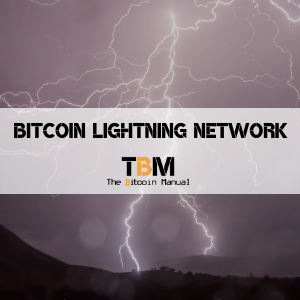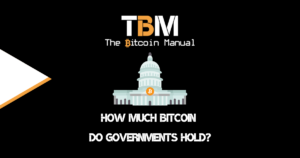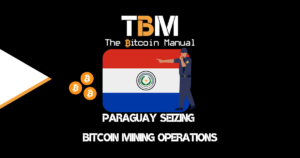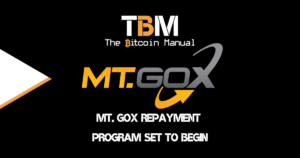Lightning Network
Home » Blockchain » What Is The Lightning Network?
The Lightning Network is one of bitcoins’ primary solutions for scaling the network so more people can use it in various ways and bypass the limitations of the primary blockchain. The Lightning Network acts as a second layer added to Bitcoin’s (BTC) blockchain that allows off-chain transactions as transactions between parties not registered on the blockchain network.
This layer two environment enhances the scalability of blockchain applications by managing transactions outside the blockchain main net (layer one), while still benefiting from the main chains powerful decentralised security paradigm, as users can move to and from the Lightning Network using a custodial or non-custodial service depending on their level of comfort using the chain.
As you can probably tell from the name the Lightning Network is designed for fast, instant, and low fee payments ideal for the medium of exchange and other programmable payments that require instant finality but do not require the security of the base chain. Think of it as a network similar to your favourite payment app or your debit card.

What is the Lightning Network?
The Lightning Network has its origins in bitcoins creator Satoshi Nakamoto, but was formalized by researchers Joseph Poon and Thaddeus Dryja, who published a white paper about the Lightning Network on January 14, 2016.
It was proposed as an alternative scaling solution to avoid having to expand the block size of the bitcoin network and risk centralisation of the chain. In addition, taking scaling off-chain means you maintain the integrity of the base chain and allow for more experimental work on bitcoin free from the main chain constraints.
Lightning Labs, a blockchain engineering lab, helped to launch a beta version of the Lightning Network in March 2018—alongside two other popular implementations by other companies including ACINQ and Blockstream.
- Lightning Labs – LND
- Blockstream – Core Lightning (Previously known as c-lightning)
- ACINQ – Eclair
Each version of the protocol has its own views on tackling certain issues but remains interoperable with one another when using wallets so for the end-user, it doesn’t matter which version you’re using on your node.
The Lightning Network is a protocol that anyone can use and develop on, expand and improve, and creates a separate environment to use bitcoin through a series of smart contracts that lock bitcoin in Lightning to avoid double-spending. The Lightning Network is not a blockchain but lives on top of bitcoin and uses the base chain as its final settlement layer.
The Lightning Network runs with its own set of nodes that run this additional protocol and lock bitcoin liquidity in it, to help facilitate payments.
Lightning allows any user to create a peer-to-peer payment channel between two parties, like between a customer and a merchant. Once established, the channel allows them to send an unlimited amount of transactions that are nearly instant as well as inexpensive. It acts as its own little ledger for users to pay for even smaller goods and services such as coffee without affecting the primary Bitcoin network.
How does the Lightning Network work?
The Lightning Network is built upon smart contracts known as hashed time lock contracts that create off-chain payment channels between two parties. Once you lock bitcoin on the main chain in this special type of contract those funds are unlocked in the Lightning Network.
You can then use those funds to create payment channels with different Lightning Network users, applications, or exchanges.
These are direct payment lines that occur on top or outside of the main blockchain. Once the payment channel is open, you can make an unlimited number of payments until those funds are depleted.
Using the Lightning Network funds are not restricted to the rules of the bitcoin base chain and can occur instantly and at a fraction of what it would cost on the main blockchain.
Your payment channel has its own ledger where the transactions are recorded away from the main Bitcoin blockchain. Each party has the power to close or renew at their discretion and move funds back to the bitcoin base chain by broadcasting a closing transaction.
Once the two parties decide to close the payment channel, all of the transactions that occurred inside are consolidated and then broadcasted to the main blockchain ledger.
Why would you want to use the Lightning Network?
Moving sats in a flash
The Lightning Network is a 2nd layer built on top of Bitcoin’s main chain which facilitates instant and very low fee transactions between lightning wallets. It interacts with the main chain if required but primarily, payments are settled “off-chain” using a separate ledger on the lightning network..
Different apps have been developed that are compatible with the Lightning Network which are user-friendly and require nothing more than a QR code to send and receive payments cross-borders.
You can keep your lightning wallets topped up by sending Bitcoin out from exchanges or buying sats directly in these apps. Most have a limit of a few million sats (although this is increasing as more businesses and countries adopt Bitcoin) that you can send per transaction, which makes sense as if you’re sending larger amounts, you’re better off using the mainchain.
Stay in the node
As more people start connecting to the lightning network and harness its power, people are setting up their own nodes to verify transactions via their own lightning payment channels. These channels allow varying amounts of sats to be sent securely and it means you also receive a small part of the fees from each transaction that goes through your channel.
Easy on the fees
Despite the instant transactions, there are still fees associated with setting up and closing payment channels, which need to be locked in on the main chain once the payment over lightning has been settled. There are also “routing” fees which go to the lightning nodes (payment channels) that are set up to facilitate the payments.
As Bitcoin development continues and upgrades are rolled out, we’ll see more and more growth on 2nd layer applications such as lightning.
More resources on the Lightning Network?
Share with a friend
If you thought this information was helpful why not share it on your favourite social media network and encourage others to learn more about Bitcoin
The latest news from our blog

How Much Bitcoin Do Governments Hold?
Germany’s latest sale of 50,000 Bitcoin has revealed a number of large Bitcoin holders that very few of us pay attention to. Believe it or

Paraguay Seizing Bitcoin Mining Operations
The biggest incentive for Bitcoin miners to move to Paraguay comes from the Itaipu Dam, which is co-owned by Brazil and Paraguay. The hydroelectric dam is

Mt. Gox Repayment Program Set To Begin
2024 has been the year of liquidation. First, the German government decided to offload the 50,000 coins it seized from Movies 2k. During those 27
